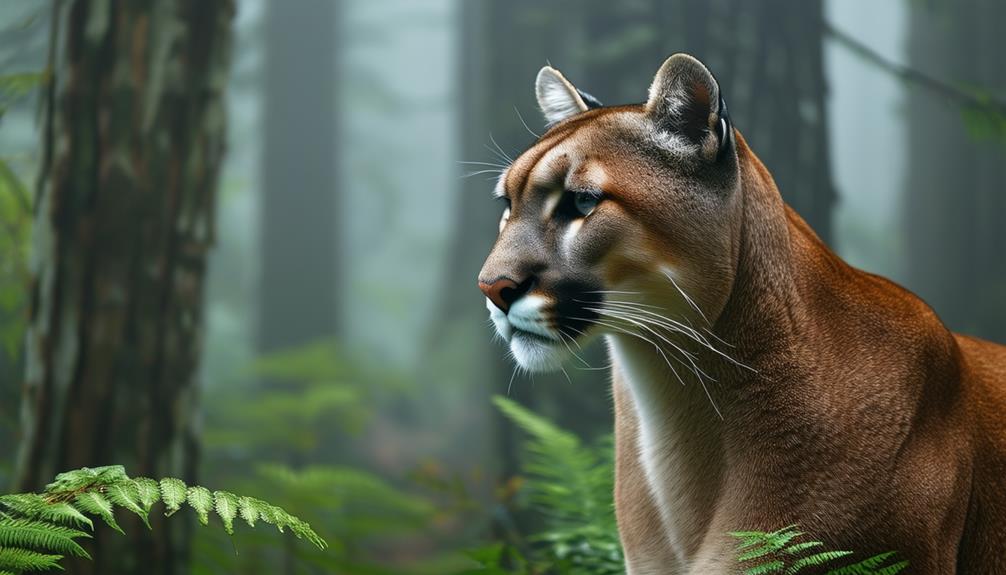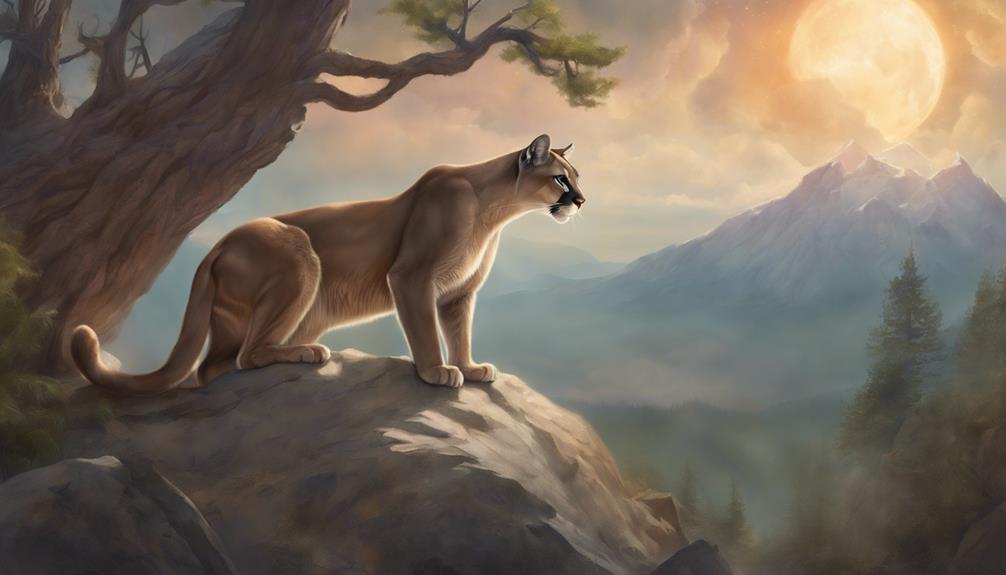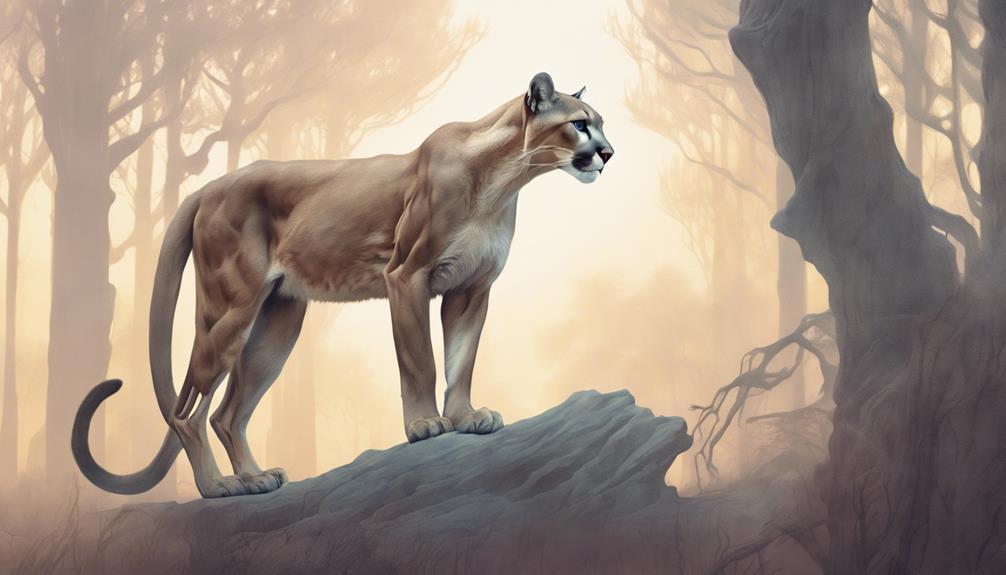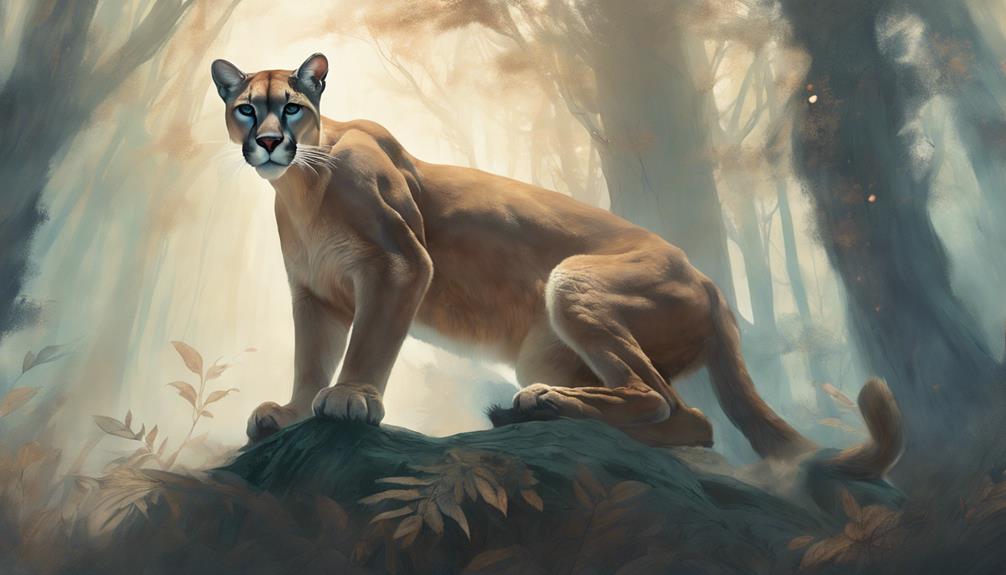
Unlocking the Meaning of Cougar: Definition, Behavior, and Role in the Wild
As you explore the domain of the cougar, a magnificent creature enveloped in enigma, you'll unearth a solitary yet nimble predator that has prospered in the Americas for centuries, playing a crucial role in maintaining the delicate equilibrium of its ecosystems. Also recognized as mountain lions or panthers, these sizable felines are apex predators, controlling ungulate populations and thriving in diverse environments. With distinctive behavioral traits and flexibility, they've perfected the art of survival. But there's more to unveil – the intricate dance of their reproduction, maturation, and social conduct, along with the challenges they face, and the conservation efforts in place to safeguard them, ready to be revealed as you delve deeper into their world.
Cougar Definition and Characteristics
Frequently, when individuals hear the term 'cougar', they immediately think of a sleek and powerful predator, scientifically classified as Felis concolor, roaming the wilderness of North and South America. You might imagine a majestic creature, its tawny coat blending seamlessly with the surroundings, its piercing gaze scanning the terrain for prey.
But what exactly is a cougar? Also referred to as mountain lions or panthers, cougars are large, agile felines that inhabit the vast expanse of the Americas. As solitary animals, they exhibit unique behavioral traits, adapted to thrive in their natural habitats. Despite their fearsome reputation, cougars are fascinating creatures, shrouded in mystery and intrigue.
As you explore further into the world of cougars, you'll uncover the complexities of their nature, their distinctive characteristics, and the secrets they hold. By examining the definition and traits of cougars, you'll gain a deeper appreciation for these magnificent creatures and the significant role they play in the wild.
Ecological Role and Habitat
As you step into the world of cougars, you'll investigate that their presence has a significant impact on the delicate balance of their ecosystems, and it's their unique ecological role that sets them apart as apex predators.
As a keystone species, cougars regulate ungulate populations, influencing competitive interactions between herbivores in their diverse habitats. Their disappearance can lead to ecosystem decline and biodiversity loss, making their presence vital for maintaining healthy ecosystems.
Cougars thrive in diverse environments throughout the Americas, preferring habitats with enough brush for ambush hunting. Home range sizes vary based on prey density, with males typically having larger ranges marked with different signs for communication.
By controlling prey populations, cougars ensure a balanced ecosystem, maintaining the health of their habitats. Their adaptability allows them to flourish in different environments, from dense forests to open grasslands.
As you delve further into the world of cougars, you'll uncover the intricate relationships between these apex predators and their habitats, and the essential role they play in preserving the natural balance of their ecosystems.
Reproduction and Maturation Process

You'll find that cougars' reproductive habits are shaped by their solitary nature, with adult males roaming freely to mate with multiple females throughout the year. This breeding freedom allows them to spread their genes far and wide, ensuring the continuation of their species.
Female cougars, on the other hand, focus their energy on nurturing their young. They give birth to litters of 1-6 kittens, with an average of 2-3, which are born blind and spotted. As they mature, the kittens' spots fade, and they begin to investigate their surroundings within 10-20 days.
Under their mother's watchful eye, they grow rapidly, learning fundamental hunting skills that will one day be vital for their survival. For up to 24 months, mother cougars teach their kittens the art of hunting, providing them with the tools they need to thrive in the wild.
This extended maternal care is essential for the kittens' maturation process, allowing them to develop into capable hunters and eventually, reproducing cougars.
Mortality Factors and Lifespan
In the wild, cougars face a variety of mortality factors that impact their lifespan, with adult mortality rates primarily driven by hunting, intraspecific fights, and vehicle collisions.
As you investigate the world of these majestic creatures, you'll find that disease-related deaths are relatively uncommon compared to these leading causes of mortality.
An adult male cougar typically lives up to 10-12 years in the wild, while females have slightly longer lifespans. However, habitat loss and human activities play a significant role in the decline in cougar populations, affecting their lifespan in the process.
It's essential to understand these mortality factors to implement effective conservation strategies that protect these magnificent animals.
By grasping the complexities of cougar mortality, you'll appreciate the importance of preserving their habitats and reducing human impact.
As you continue to examine the world of cougars, you'll realize that every conservation effort counts in ensuring the long-term survival of these incredible creatures.
Diet and Hunting Behavior

While understanding the challenges cougars face in the wild is essential, their survival also depends on their ability to thrive as apex predators. A closer look at their diet and hunting behavior reveals a fascinating adaptation to their environment.
As an obligate carnivore, you'll find that cougars primarily feed on deer, elk, and other large ungulates, in addition to smaller species like coyotes, rabbits, and raccoons. Their hunting strategy relies on stealth and surprise, using their powerful canines to suffocate prey quickly.
Efficient hunters, cougars use their keen senses to ambush and take down their prey, maintaining a delicate balance in the ecosystem. Occasionally, they may prey on pets or livestock, especially in areas where their natural prey is scarce.
By regulating ungulate populations, cougars play a vital role in maintaining ecosystem balance, ensuring the wild remains a thriving tapestry of life.
As you explore further into the world of these majestic predators, you'll appreciate the intricate dance between cougars and their environment, where every move is a tribute to their remarkable adaptability.
Dens and Communication Methods
As a cougar mother prepares to give birth, she carefully selects a protected den site, often hidden in rocky crevices, under tree roots, or within dense vegetation, to guarantee the safety and shelter of her vulnerable kittens.
You can imagine the significance of this den, serving as a refuge for her newborns, where they'll nurse, grow, and learn important hunting skills under her watchful eyes. These dens provide more than just physical shelter; they're a sanctuary for offspring protection, allowing the mother to focus on nurturing her young.
But how do cougars communicate, ensuring the safety of their dens and their young? They rely on a combination of visual signals, olfactory signals, and vocalizations like growls, hisses, and chirps to convey crucial information. You might even hear the gentle purring or whistling of a mother and her kittens, a heartwarming display of affection and bonding.
Through these communication methods, cougars can maintain their social bonds, defend their territories, and thrive in the wild.
Biology, Evolution, and Classification

You're about to discover the fascinating world of cougar biology, where scientists have revealed intriguing secrets about this majestic predator's evolution and classification.
Cougars, scientifically known as Puma concolor, belong to the family Felidae and order Carnivora. The family Felidae is believed to have originated in Asia about 11 million years ago, and North American felids invaded South America 2-4 million years ago as part of the Great American Interchange. This event led to the genetic similarity among North American cougar populations, suggesting a recent common ancestry and repopulation of North America by South American cougars.
Here are some key points about cougar biology, evolution, and classification:
- Evolution: Cougars have evolved from a common ancestor with other Felidae species, adapting to their environment over millions of years.
- Classification: Cougars belong to the family Felidae and order Carnivora, with a scientific name that reflects their relationship to other big cats.
- Genetic similarity: The genetic similarity among North American cougar populations suggests a recent common ancestry.
- Great American Interchange: This event allowed North American felids to invade South America, leading to the diversification of cougar populations.
As you delve deeper into the world of cougar biology, you'll uncover more secrets about this majestic predator's evolution and classification.
Threats and Conservation Efforts
Today, cougar populations are facing unprecedented threats, from habitat loss and human encroachment to illegal hunting, which have led to increased human-cougar conflicts and raised concerns about the long-term survival of these apex predators.
As you explore the world of cougars, you'll realize that habitat loss and fragmentation, largely due to urban development, have left cougar populations isolated and vulnerable. Human encroachment has further worsened the problem, leading to increased encounters between humans and cougars, which often end in tragedy for the animals.
Conservation efforts are underway to safeguard cougar habitats, prevent illegal hunting, and raise awareness about the importance of preserving these majestic creatures. You might be surprised to learn that despite being classified as Least Concern on the IUCN Red List, ongoing conservation efforts are essential to guarantee the sustainability of cougar populations in the wild.
The eastern cougar's local extinction in eastern North America serves as a stark reminder of the urgent need for conservation measures to protect remaining populations.
Behavior and Social Interactions

While exploring the world of cougars, you'll unearth that these elusive predators are solitary animals, typically avoiding other individuals except during mating or when raising young. This solitary nature doesn't mean they're completely disconnected, though. They communicate through visual, olfactory, and vocal signals, including growls, hisses, and purring.
Here are some key aspects of cougar behavior and social interactions:
- Territorial establishment: Cougars establish territories to mark their presence and defend resources like food and shelter.
- Scent marking: They use scent marking to communicate with other cougars and maintain their territorial boundaries.
- Vocalizations: Vocalizations play a significant role in cougar communication, especially during mating or when raising young.
- Territorial disputes: When encountering other cougars, they may engage in territorial disputes to protect their resources and dependent young.
Females with dependent young exhibit more territorial behavior to protect their offspring from potential threats. This strong maternal instinct is a proof of the cougar's remarkable adaptability in the wild.
As you explore further into the world of cougars, you'll encounter a complex, fascinating creature that continues to captivate and inspire.
Frequently Asked Questions
What Is the Definition of a Wild Cougar?
You're wondering what a wild cougar is? Well, it's a large, tawny cat scientifically classified as Felis concolor, found in North and South America, and considered endangered in some regions due to habitat loss.
What Is a Cougar's Behavior?
You're wondering about a cougar's behavior, right? Well, as an ambush predator, you'll find they're solitary and territorial, with varied activity patterns influenced by predators, prey, and human disturbances in their habitat.
What Is a Cougar Easy Definition?
You're wondering what a cougar is in simple terms? Well, it's a large, adaptable cat with a tawny coat, found in North and South America, and known for its solitary nature and impressive hunting skills.
What Is the Modern Definition of Cougar?
You're wondering what the modern definition of cougar is? Well, it's a large, tawny cat, scientifically known as Felis concolor, also referred to as a mountain lion, panther, or puma, found in North and South America.
Conclusion
As you stand at the edge of the wilderness, the cougar's whispered presence lingers, a reminder of the untamed power that lies just beyond our grasp.
With eyes that burn like embers, this majestic creature weaves an intricate dance between life and death, its very existence a proof to the mysterious harmony of the natural world.
As you gaze into the darkness, the cougar's secrets remain, waiting to be unraveled, a siren's call to the curious and the brave.




